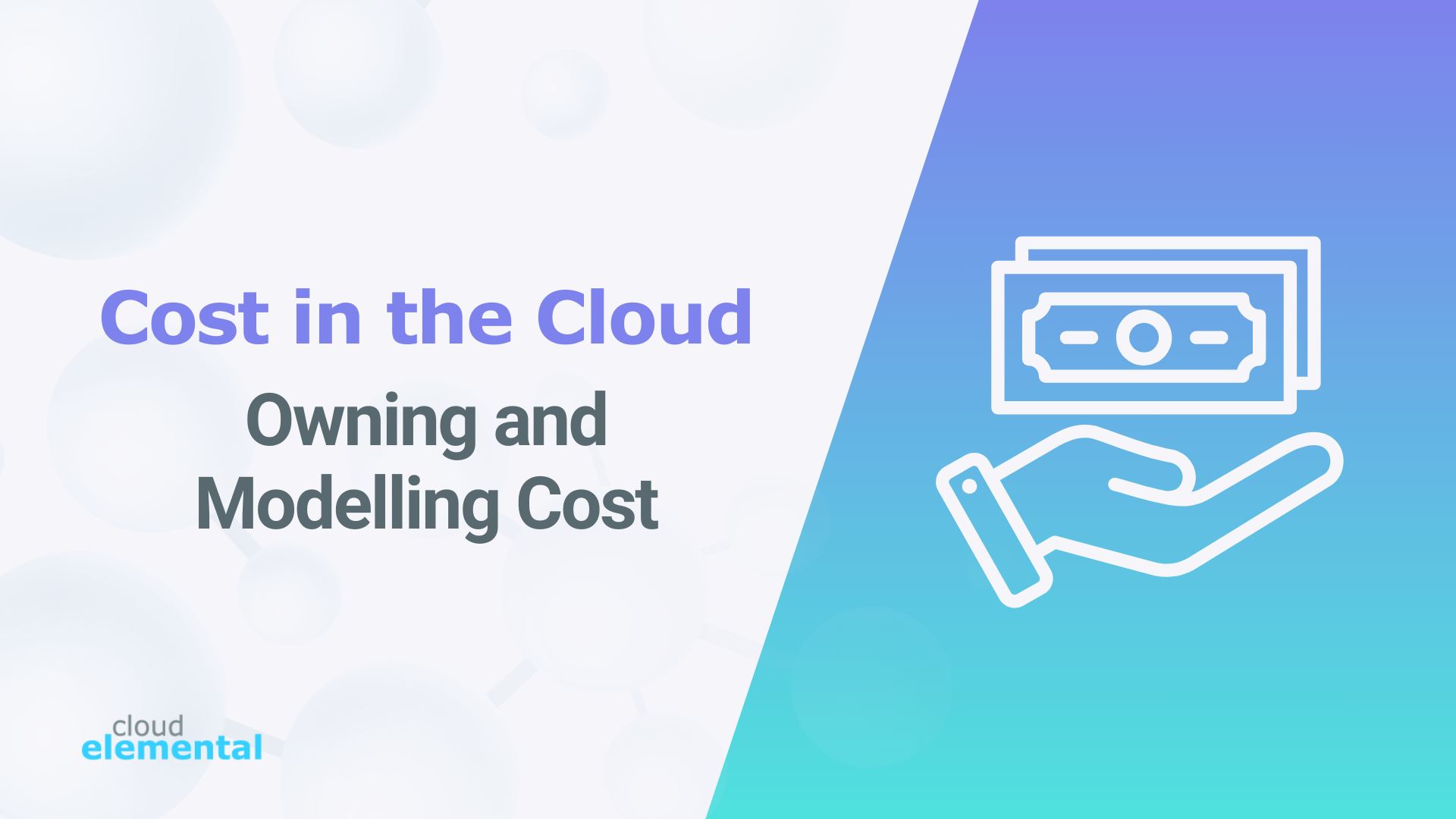In the early stages of Cloud adoption, it’s easy to focus on technical benefits: scalability, reliability, resilience, and more. However, the main concern for companies debating a Cloud migration is cost.
Thankfully, there are processes and tools that help model and forecast spend to support stronger financial decisions, even before a solution goes live.
What Is Total Cost of Ownership (TCO) in the Cloud?
Total Cost of Ownership (TCO) offers a comprehensive view of what a workload will cost over its lifetime. It can be used to forecast both upfront development costs and ongoing production spend.
This includes not only core services, like compute and storage, but also usage-dependent costs such as:
- Data transfer (inbound and outbound)
- Licensing (e.g. for Windows or SQL Server)
- Support plans
- Elasticity (auto-scaling or usage spikes)
- Backup and recovery mechanisms
- Operational overhead for monitoring, patching, and management
Cloud TCO is deeply affected by how services are configured and consumed, providing a revealing view into potential or actual spend.
Why This Matters
Understanding TCO is essential for anyone responsible for Cloud strategy or cost accountability. Without a well-defined cost model, even technically sound architectures can suffer from unpredictable billing or diminishing return on investment.
Getting this right helps you:

Make data-driven Cloud investment decisions

Compare on-prem solutions to Cloud alternatives

Align architecture with business goals

Justify spend to finance, procurement, and leadership teams
A well-modelled TCO improves financial control, accelerates buy-in across the organisation, and highlights hidden areas of waste that can be optimised before deployment.
The Three Critical Elements of a Complete Cost Model
1. Inputs Used to Estimate Cost
It’s critical to use realistic figures, as placeholder data can lead to significantly inaccurate estimates.
Cost estimation begins with gathering accurate technical inputs. Key considerations include:
- Resource type and count: e.g. virtual Machine specs, number of API invocations, database configurations
- Runtime hours: Are resources always-on or variable?
- Storage needs: Volume, redundancy requirements, object lifecycle
- Data movement: Estimate inbound and outbound transfer (usually in GB/month)
- Service-level preferences: On-demand vs. reserved, multi-AZ setups, support tier
2. A Transparent Summary of Cost Estimates
Tools like pricing calculators can greatly support cost model creation by providing a list of services and settings that can be tailored to match your desired architecture. Not only do they provide a great breakdown of service features, but they calculate costs based on the provider’s latest pricing.
Once inputs are modelled, the calculator will summarise projected costs, such as:
- Monthly and annual estimates
- Breakdown by service (compute, storage, network, etc.)
- Sensitivity for traffic/load variation (e.g. peak periods)
- Assumptions of regional pricing, pricing model, licensing
3. A Clear Business Value Analysis
Presenting these findings simply, especially when engaging stakeholders, is key to justifying spend. However, the real priority is showcasing the added value of Cloud.
Cost estimation begins with gathering accurate technical inputs. Key considerations include:
- Operational efficiency gains: Lower manual effort, improved uptime
- Elastic cost models: Pay for what you use, not idle capacity
- Time-to-market acceleration: Faster product cycles and scaling
- Risk reduction: Better failover, security, and compliance
Tools and Techniques: Getting Started with AWS Cost Modelling
The following AWS tools can be combined to validate assumptions and iterate on your cost model.
AWS Pricing Calculator: Estimate costs based on selected services and usage patterns
AWS Cost Explorer: Analyse historical usage and forecast future spend
Trusted Advisor: Identify underutilised resources and opportunities for cost optimisation
AWS Budgets: Set alerts for forecasted vs. actual spend
Compute Optimiser: Get right-sizing recommendations based on usage
A Checklist for Robust Cost Modelling
Before presenting your cost model, ensure you’ve covered:
- Have you gathered inputs from real workload metrics or credible projections?
- Does your estimate include a full breakdown by service and usage pattern?
- Have you accounted for elasticity and auto-scaling?
- Have you explored reserved instance or savings plan options?
- Have you translated costs into clear business benefits?
- Can the model output be easily exported and shared?

Cloud infrastructure, when poorly estimated, can generate friction between engineering and finance. But with a clear, defensible cost model and thoughtful TCO analysis, Cloud deployments become more predictable, justifiable, and strategic.
Our Well-Architected Framework (WAF) reviews specifically focus on areas like cost optimisation and operational excellence – two pillars critical to maximising Cloud investment. Through our AWS Advanced Tier Partner status, we can also unlock AWS funding programmes that lower the barrier to entry for your review, helping your team validate spend, model for elasticity, and reduce unnecessary overhead before production even begins.
To set up a free AWS WAF consultation with us, visit our information page, or visit our AWS Marketplace listing below.




